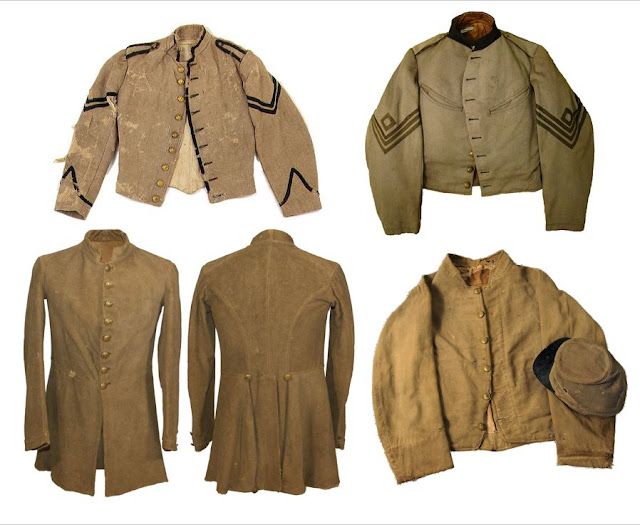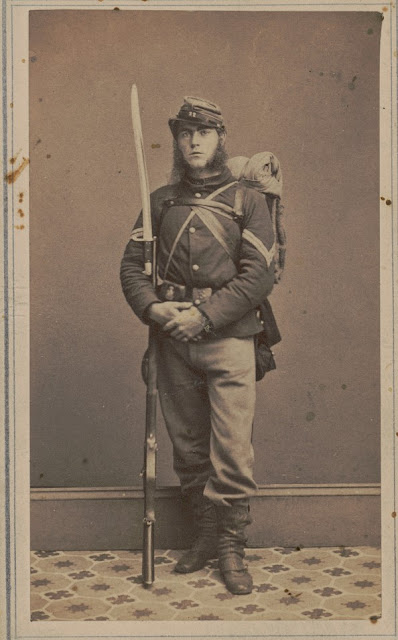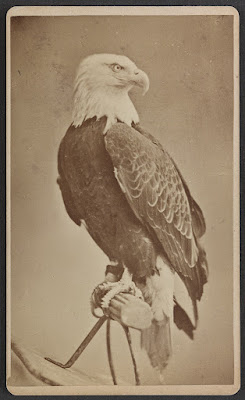No Hope for the Johnnies: Battery C at Bentonville
Sherman Hendrick of Battery C, 1st Ohio Light Artillery had fought as part of the Army of the Cumberland since its inception. But at Bentonville, North Carolina in March 1865, he saw something he had rarely seen on a battlefield: the 14th Corps running away from a fight.
“Soon after our arrival, we heard a
great uproar towards the front and saw pack mules, baggage wagons, and part of
a battery coming back in great disorder,” he recalled. “Our advancing brigades
had been flanked by an overwhelming force and came back in awful confusion. The
command was given, “Right wheel into battery!” At 3:15 p.m., we were in good
shape for callers. We were no sooner in position than the 14th Corps
brigade came running through our line, one captain crying out, “Lee’s whole
army is after us! Run for your lives, boys, run!” The 14th Corps
boys were not in the habit of running away from a fight, so we knew that there
must be something ahead worth running for. But we were there first and meant to
hold our ground.”
Hendrick’s battery, attached to the 20th Army Corps, would hold their ground for the rest of the battle, its last major engagement of the Civil War. Corporal Hendrick’s description of Bentonville first appeared in the June 30, 1892, edition of the National Tribune.
 |
| Private John D. Thompson, Battery C, 1st Ohio Volunteer Light Artillery |
On Sunday March 19, 1865, we marched
at 7:30 a.m. on the Bentonville road from the direction of Averysboro. At 10
a.m., we heard artillery ahead where the 14th Corps was fighting the
enemy under General Joseph Johnston. The enemy was slowly driven back until
they reached entrenchments near Bentonville.
We reached this point at 2:40 p.m. and
went into park in an open field near a house and peach orchard. We had seen the
peach trees in bloom all morning, it being regular spring warm and the roads
muddy. As we came to a halt, the lines were extended to the left by the 20th
Corps to which Battery C was now attached, forming on the left of the 14th
Corps. All the time there was hard skirmishing in front nearly a mile ahead of
us. Two brigades, one of the 14th and one of 20th Corps,
were advancing upon the Rebel work to try their position.
Soon after our arrival, we heard a
great uproar towards the front and saw pack mules, baggage wagons, and part of
a battery coming back in great disorder. Our advancing brigades had been
flanked by an overwhelming force and came back in awful confusion. The command
was given, “Right wheel into battery!” At 3:15 p.m., we were in good shape for
callers. We were no sooner in position than the 14th Corps brigade
came running through our line, one captain crying out, “Lee’s whole army is
after us! Run for your lives, boys, run!” The 14th Corps boys were
not in the habit of running away from a fight, so we knew that there must be
something ahead worth running for. But we were there first and meant to hold
our ground. General [James S.] Robinson formed his brigade to support our
battery, the only one on the field, and then began the work of rallying the
fleeing troops. The flag bearer of the 82nd Ohio halted to the left
of our battery and rallied his comrades by waving the colors and calling, “Where
is the 82nd Ohio?”
All this had taken place in 15 minutes
and we had redoubts started three rails high in front of our pieces when the
Rebels came out of the woods in the front and on the left of us about 500 yards
away. As they emerged from the woods, our skirmishers heard their officers say,
“Boys, go for that battery,” and they started. But about this time was our put
in and we sent them a volley of case shot cut just right to burst among them.
We kept this up as fast as we could load and fire and they soon fell back to
the cover of the woods.
 |
| Corporal Sherman Hendrick Battery C, 1st O.V.L.A. |
As soon as they did this, troops were
advanced to the edge of the woods on our right and left, leaving our front for
us to take care of while we strengthened our works. In the meantime, Battery I,
1st New York Light Artillery, had arrived and taken position, ready
to assist in repelling the second charge. Before the third charge, another
battery was in position belonging to the 14th Corps. The Rebels
charged seven times before dark but as we were reinforced all the time, they
did not get out of the woods after the first charge.
During the second charge, Corporal.
D.A. Reed of Battery C was severely wounded and died three days afterwards and
was buried on the way to Goldsboro. Battery M, 1st New York Light
Artillery arrived about 5 p.m. making four batteries in position, ready for
business at the same old stand. There was now no hope for the Johnnies; our
lines were too strong and they retired to their works.
Battery C fired 271 rounds, mostly case
shot. The first charge was repulsed wholly by case shot, showing that to be a
powerful weapon when properly used. The 20th Corps arrived not a
minute too soon as the 14th Corps was being roughly handled by
Johnston’s whole army. Battery C had the honor of saving the day by repulsing
that first charge. Not that we did any better than would any of the other
batteries, but we were there and they were not. The infantry, as always, did
their duty. But I was watching the enemy and the work of the artillery that day
and had a large open field to do it in so I can say but little for the work of
the infantry.
As the enemy was charging us, it was
preeminently an artillery battle and proved the efficacy of case shot for
treating that kind of disease. It certainly did good execution as was proved by
the line of dead left in the open field from the first charge and from the fact
that the enemy could not be coaxed or driven out of the woods to meet those
shrieking, bursting shells a second time. They would form back in the woods and
come up to the opening all right, but there they would break and rush back out
of reach, then form and advance to break and fall back again.
This is Bentonville as I saw it.
“Bentonville,
N.C.: The Part Taken by Battery C, 1st Ohio L.A. in one of Sherman’s
last fights,” Corporal Sherman Hendrick, Battery C, 1st Ohio
Volunteer Light Artillery, National Tribune, June 30, 1892, pg. 3










Comments
Post a Comment